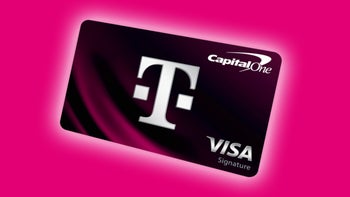Samsung Galaxy Watch 6 vs Galaxy Watch 5: what's changed?
We may earn a commission if you make a purchase from the links on this page.

Intro
What's new in the Samsung Galaxy Watch 6 compared to the previous Galaxy Watch 5 model? And are there enough reasons to upgrade?
Samsung has made a number of small improvements on the Watch 6 that do add up, and even if the new watch looks very similar to the previous generation, you should not underestimate the changes.
But let's explore what exactly has changed and in what way, shall we?
Samsung Galaxy Watch 6 vs Galaxy Watch 5: differences
- Similar design style
- 40mm and 44mm sizes on both
- Watch 6 has slimmer bezel, slightly larger screen
- Both use sapphire glass on the front and back
- Faster chip on Watch 6
- New one-click bands
- Improved sleep tracking on Watch 6
- Slightly higher price
Table of Contents:
Also read:
- Samsung Galaxy Watch 7 vs Galaxy Watch 6: All upgrades
- Samsung Galaxy Watch 6 vs Apple Watch Series 8: which one should you go for?
- Samsung Galaxy Watch 6 Classic vs Galaxy Watch 5 Pro: Beauty versus brawn
Design & Sizes
Same look, slight differences in physical size

The Galaxy Watch 6 looks extremely similar to last year's Galaxy Watch 5, but is not quite exactly the same.
The new watch is a bit slimmer, which we appreciate.
In terms of sizes, you have two options on both. The 40mm option is great for those with smaller wrists, while a 44mm model will fit medium and larger wrists better. The Watch 6 uses smaller bezels and as a result you get a larger screen on both these models.
The Galaxy Watch 6 is also keeping one of the main advantages from the Watch 5 and that is the sapphire glass on both the front and the bottom part. Sapphire is much more durable than regular toughened glass, with some estimates saying it is 60% better at resisting scratches.
The new watch is a bit slimmer, which we appreciate.
In terms of sizes, you have two options on both. The 40mm option is great for those with smaller wrists, while a 44mm model will fit medium and larger wrists better. The Watch 6 uses smaller bezels and as a result you get a larger screen on both these models.
The Galaxy Watch 6 is also keeping one of the main advantages from the Watch 5 and that is the sapphire glass on both the front and the bottom part. Sapphire is much more durable than regular toughened glass, with some estimates saying it is 60% better at resisting scratches.
Bands
New one-click bands
Both the Galaxy Watch 6 and Watch 5 use a 20mm band size, and you can use any band with spring bars.
Samsung introduces new one-click bands on the Watch 6 where it replaces the tiny metal lever used traditionally for a much bigger button, which is supposed to make swapping bands easier. We found this new one-click system to be a bit finicky and it requires a very firm press on the button. If you already own a few bands of the old spring-bar style we would not rush to buy new ones just because of this new system.
Samsung's sporty band features a soft silicone material and does not irritate the skin, but we feel it's a bit too bulky, and we quickly swapped for a slimmer band. Something like the fabric band would be perfect if you are looking for an everyday band that you can also comfortably wear while sleeping.
Software & Features
Sleep tracking improved
Samsung is using Google's Wear OS platform on both of these watches which is good news as it helps more developers stay committed to the platform, and when developers are on board good things are bound to happen for Android watches.
Both the new Watch 6 and older Watch 5 only support a "digital bezel", where you run your finger across the edge of the watch to scroll around. It's not quite as cool as a physical bezel, but it's at least something. To be honest, most of the time, we just used swipes to navigate the UI.
As for the rest of the functionality you have all the standard stuff:
- heart rate monitoring
- workout tracking
- sleep tracking
- blood oxygen measurements
- ECG function
Samsung also introduces a bunch of new software features: improved sleep tracking, fall detection, irregular heart rhythm detection and more, and both of those are expected to be available on both watches.
The sleep tracking gives you a breakdown of your sleep by stages, but it has some quirks. For some reason, it detects VERY little deep sleep to the point of the results being dubious. After a week of sleeping with the watch, you will be assigned your personal "sleep animal" and the Watch 6 starts giving you recommendations for a better sleep based on your sleep type.
On the plus side, both Galaxy Watches detect naps, which is nice.
Battery and Charging
A slight upgrade

Samsung includes slightly bigger batteries inside the Galaxy Watch 6, but the keyword here is "slightly".
The smaller, 40mm version of the watch is getting a nearly 6% bigger battery, while the 44mm model gets a more modest, 3.6% improvement.
Here are the exact battery size numbers:
- Galaxy Watch 6 40mm battery size: 300 mAh (+5.6%)
- Galaxy Watch 5 40mm battery size: 284 mAh
- Galaxy Watch 6 44mm battery size: 425 mAh (+3.6%)
- Galaxy Watch 5 44mm battery size: 410 mAh
What does this mean in real life? Well, not too much. The Galaxy Watch 5 was a one-day battery affair, and the Watch 6 can get a bit longer than that. On an average day, we drained about 60% with the Watch 6 and an additional 12% to 14% for sleep tracking. Of course, you can get more if you disable the always-on option.
Both the Galaxy Watch 6 and Watch 5 charge using a wireless magnetic puck style charger from Samsung, and charging speeds remain the same.
A full top-up takes around 1 hour and a half on both, but you can also benefit from a quick half-hour top up to get back nearly 40% of juice.
Models and Prices

Samsung is not changing its strategy when it comes to the models, but prices are going very slightly up with the Watch 6.
You have a choice of a Wi-Fi only or a Wi-Fi + Cellular (LTE) model which you will be able to use with an eSIM card independently of your phone (with a mobile plan, of course).
The base price of the 40mm Wi-Fi Watch 5 was $280 last year, and this year it gets a bump to $300, and you have a similar $20 price increase for the 44mm model.
Voice Calls and Haptics
Both watches support voice calls, but there aren't any big changes in the actual voice quality.
Haptics have also not changed much and are still a bit on the vague side, not quite on the same level as the very well controlled vibration feedback you get from rivals like the Apple Watch.
Specs
Here is an overview of the Galaxy Watch 6 vs Galaxy Watch 5 specs:
| Specs | Samsung Galaxy Watch 6 | Samsung Galaxy Watch 5 |
|---|---|---|
| Models (Size, Weight, Prices) | 40mm (38.8 x 40.4 x 9.0 mm) 44mm (42.8 x 44.4 x 9.0 mm) 28.7g weight for 40mm 33.3g weight for 44mm $300 for 40mm Wi-Fi, add $50 for Cellular $320 for 44mm Wi-Fi, add $50 for Cellular | 40mm (39.3 x 40.4 x 9.8 mm) 44mm (43.3 x 44.4 x 9.8 mm) 28.7g weight for 40mm 33.5g weight for 44mm $280 for 40mm Wi-Fi, add $50 for Cellular $300 for 44mm Wi-Fi, add $50 for Cellular |
| Materials | Aluminum body Sapphire bottom | Aluminum body Sapphire bottom |
| Processor, RAM, Storage | Samsung Exynos W930 | Samsung Exynos W920 |
| Software | WearOS 4 | WearOS 4 |
| Battery and Charging | 300mAh for 40mm 425mAh for 44mm | 284mAh for 40mm 410mAh for 44mm |
| Sensors | HR, blood oxygen, altimeter, ECG | HR, blood oxygen, altimeter, ECG |
The noticeable changes here are the new processor and larger battery sizes, as well as the slightly slimmer body of the watch.
Summary
The Galaxy Watch 6 is both a minor update, and not so much.
You might be fooled by the very similar looks, but the larger screen and faster chip do make a difference.
Samsung is slowly but surely improving its smartwatches and while we don't see a big reason to upgrade if you already own the Watch 5, users with older watches will appreciate the improvements in this latest generation.


















Things that are NOT allowed: